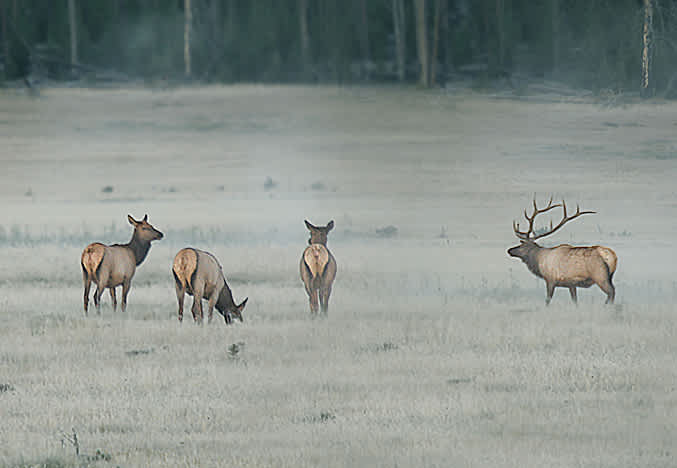Nevada Officials Poised to Issue Record Number of Elk Tags
OutdoorHub Reporters 05.02.14

Biologists from the Nevada Department of Wildlife (DOW) expect a record number of elk tags to be issued this upcoming season, in part to manage the runaway growth of the state’s 17,500 elk. According to the Reno Gazette-Journal, wildlife officials have proposed issuing almost 11,000 tags statewide.
“We’re learning that not many things kill elk other than a bullet,” said DOW supervising biologist Ken Gray. “We saw these rapid increases in our elk population. We just didn’t have the season structure to take advantage of that.”
Elk were not always so widespread in Nevada. The animal had almost completely disappeared from the state by the mid-1800s, and only a handful were left when the DOW began reintroduction efforts 25 years ago. The animals proved to be resilient, however, and their numbers have more than doubled in the last decade alone. The recovery has been so successful that ranchers and farmers are now voicing concern over the growing herd, claiming that the unruly animals are causing property damage and eating livestock feed.
“That’s $60,000 every year that I donated in alfalfa to the elk,” rancher Eric Bedke told the Elko Daily Free Press. “Times that by 20 years, that’s ($1.2 million). And that’s only in alfalfa. That doesn’t take in my grass meadows, that doesn’t take in one inch of fence that I’ve repaired, that doesn’t take in any of my private rangeland.”
Not all sportsmen are on board with more elk tags being available. Some say they are concerned that hunting spots will become more crowded, or that there will be fewer opportunities to harvest large bulls. The DOW is attempting to alleviate these doubts by encouraging more hunters to visit out-of-the-way wilderness areas. The proposal still has to be approved by the state wildlife commission when it meets next week.
The DOW is also expected to make changes to this season’s mule deer quotas. A successful buck hunt last year will likely lead to a decreased quota this season, although poor habitat conditions might provoke a higher anterless deer quota. Biologists worry that sparse forage across the mule deer’s range could lead to a disastrous winter die-off similar to what happened during the harsh winters of 1992 and 1993.

